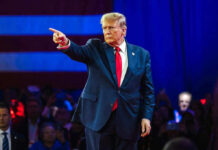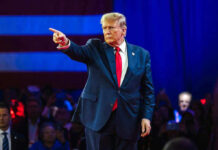
Treasury Secretary Scott Bessent is personally conducting interviews to handpick Jerome Powell’s replacement as Fed chair, signaling Trump’s determination to install a leader more aligned with his pro-growth monetary policy agenda.
Story Highlights
- Bessent leads unprecedented Treasury-driven Fed chair search with fall decision timeline
- Eight candidates include sitting Fed officials and conservative economists favoring rate cuts
- Trump ruled out Bessent himself after year of failed pressure on Powell to lower rates
- Process aims to find chair more responsive to administration’s economic growth priorities
Treasury Secretary Takes Control of Fed Chair Selection
Scott Bessent has assumed direct responsibility for vetting Federal Reserve chair candidates, marking an unusually hands-on Treasury approach to the selection process. The Treasury Secretary will personally interview all finalists before presenting recommendations to President Trump, who will make the final decision this fall. This centralized gatekeeping represents a disciplined, executive-driven strategy following Trump’s unsuccessful efforts to pressure current chair Jerome Powell into cutting interest rates throughout 2025.
Diverse Candidate Pool Spans Fed Officials and Conservative Economists
The expanded search includes three sitting Federal Reserve officials: Vice Chair for Supervision Michelle Bowman, Vice Chair Philip Jefferson, and Dallas Fed President Lorie Logan. These internal candidates offer institutional continuity and potentially smoother Senate confirmations. The administration is also considering five external candidates: White House economic adviser Kevin Hassett, Fed Governor Christopher Waller, economist Marc Sumerlin, former Fed Governor Kevin Warsh, and former St. Louis Fed President James Bullard.
Strategic Shift Away From Powell’s Rate Policy
Trump’s frustration with Powell stems from the current chair’s resistance to administration pressure for interest rate cuts throughout 2025. The candidate slate deliberately includes economists and former Fed officials perceived as more amenable to easier monetary policy aligned with Trump’s growth-focused agenda. This selection strategy reflects the administration’s desire for a Fed chair who will prioritize employment and economic expansion over traditional inflation-fighting approaches that have characterized Powell’s tenure.
Senate Confirmation Dynamics Shape Final Selection
The administration faces strategic considerations regarding Senate confirmability when choosing among candidates. Sitting Fed officials like Jefferson and Bowman carry institutional credibility that typically facilitates smoother confirmation processes. External candidates such as Warsh and Bullard bring established policy identities that markets already understand, but may face more rigorous Senate scrutiny. The administration signals no urgency in finalizing the selection, allowing time for thorough vetting and political positioning ahead of the confirmation battle.
Trump admin expands Fed chair search to 3 more candidates — including 2 vice chairs: report https://t.co/5G0XbkmsVT pic.twitter.com/ARx210ttcr
— New York Post (@nypost) August 11, 2025
Financial markets are closely monitoring the selection process, as the new chair’s monetary policy stance will significantly impact interest rates, inflation expectations, and economic growth over the next four-year term. The choice between continuity candidates and policy change advocates will signal whether Trump prioritizes Fed independence or seeks a more politically responsive central bank leadership aligned with conservative economic principles.
Sources:
Treasury’s Bessent leads search for Powell’s successor as Fed chair
Trump rules Bessent out as Fed chair
Trump admin interviews top Fed chair contenders












